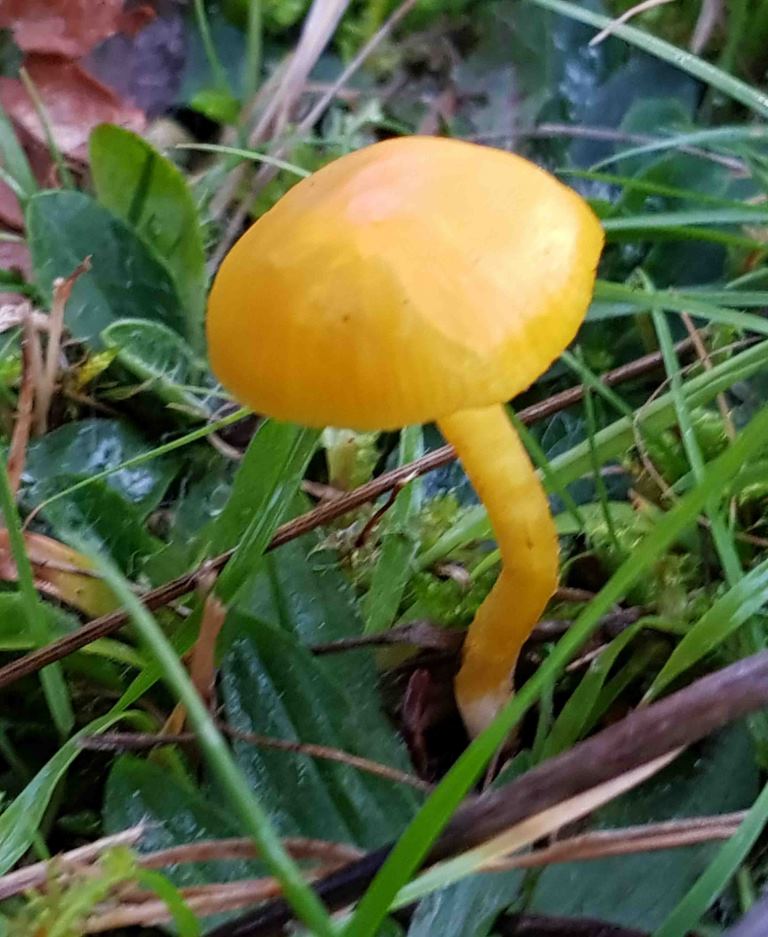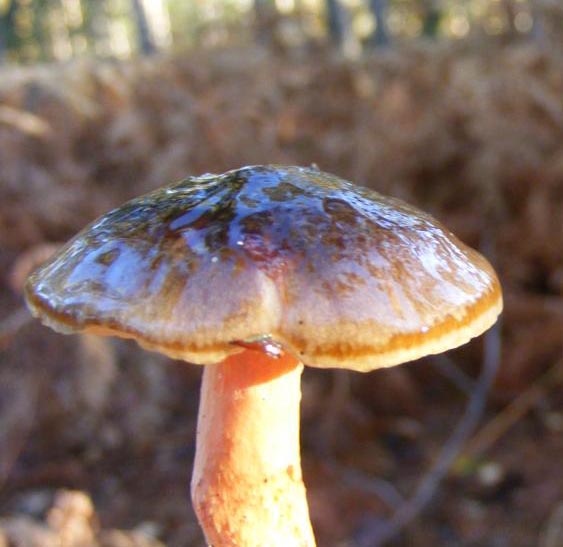A report by Katie Jenks
Red, orange, green, blue – the bold colours of the genus Hygrocybe (waxcap) include some of the most colourful species of fungi. Most species favour unimproved grassland particularly if it is grazed or cut – being so sensitive to chemical pollution (particularly phosphates) or soil disturbance, waxcaps are viewed as indicators of environmental quality. The more species of waxcap found on grassland, the higher its environmental status. Spores are white and waxcaps fruit in late summer and continue through to very late autumn.
Many of the best sites in Europe are in Britain and Ireland, and several contain in excess of 30 waxcap species – around 50% of the total number of waxcap fungi known to occur in Europe. If a new waxcap site is found, its quality is assessed by the number of species present. As they are only visible when fruiting and they don’t all fruit at the same time, a credible species count is only really possible over a number of years.
Some of the commoner waxcaps to look out for are:
Golden Waxcap (Hygrocybe chlorophane): Widespread and common, these lovely fungi are often found in small groups and are quite often found in churchyards. Cap is 2-7cm across and usually bright lemon-yellow, viscid and slightly striate. Initially domed or convex, it will become flattened and occasionally centrally depressed. Gills are white at first, becoming similar in colour to the cap but paler. They are adnex (partly free), broad and distant. The stipe/ stem is slender and smooth, the same colour as the cap, slimy when moist and has no ring.
Snowy Waxcap (Cuphophyllus virgineus): In a lot of waxcap sites, this is the most plentiful species. They are easy to spot and often appear in tufts or occasionally, large trooping groups. Cap is 1-4.5cm across, flattening as it gets older. It can sometimes become upturned and is white, ivory or occasionally fawn. The cap is smooth and greasy when wet, drying silky. Gills are white or ivory and widely spaced running down the stipe. The stipe tapers towards the base and is dry with no ring.
Parrot Waxcap (Gliophorus psittacinus): Previously known as Hygrocybe psittacina, the name arose because caps can be green, orange, purple or yellow, depending on age and weather. Fairly frequent on roadside verges and cropped grassland, the green pigment is contained in gluten which, during wet weather, washes off the cap and parts of the stipe. The cap is 1-4cm diameter and splits in dry weather. It is very greasy and smooth. Gills are thick and waxy, only partly attached to the stipe. They are yellowish but tinged green nearer the cap. The stipe is smooth and very slimy with no ring.
If your interest in fungi has been piqued, come along to a meeting at Pangbourne village hall and take a book out of the RDNHS library. There are a variety of fungi ID guides to choose from.
Article by Katie Jenks



